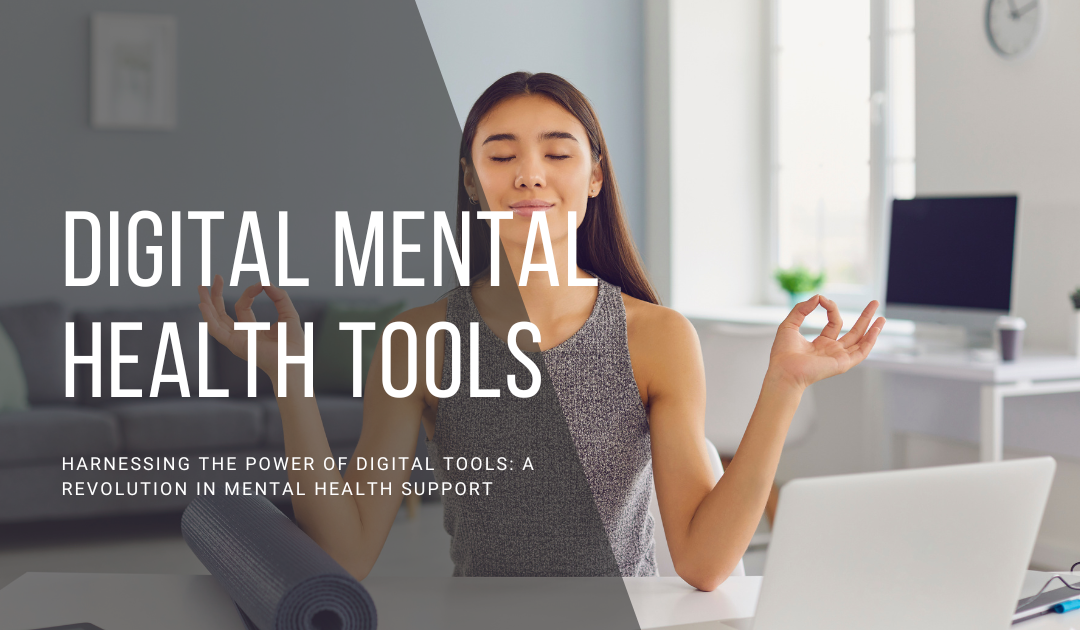Before the advent of technology, accessing mental health care had been a serious challenge for many in society.
Let’s take a look at some of these:
1. Accessibility: Access to mental health care has historically been problematic due to geographical and logistical constraints. Many individuals live in regions where the availability of mental health professionals is scarce or non-existent.
2. Stigma: Despite advances in knowledge, mental health issues are often still stigmatized in society. This can deter individuals from seeking help due to fear of judgment or discrimination.
3. Cost: The financial burden of therapy sessions and medication can be overwhelming, particularly for those without insurance or with inadequate coverage.
4. Wait Times: Even for those who overcome other barriers, long wait times for appointments can delay crucial treatment and exacerbate mental health conditions.
5. Lack of Awareness: Many people are not informed about the signs of mental health problems and don’t recognize when they or someone they know needs help. This can delay diagnosis and treatment, leading to more severe outcomes.
The challenges in getting mental health care have always been quite complex, and as a society, we’ve needed a comprehensive, innovative approach to overcome them.
Enter digital technology.
Digital Tools Making a Difference:
Given the challenges mentioned earlier, digital mental health tools have come up as a game-changer.
These tools use technology to fill gaps in accessibility, affordability, and stigma linked to traditional mental health care. They bring in a new era for mental health treatment.
Digital Therapeutics:
Digital therapeutics, a new branch of digital health, uses technology to treat various medical and psychological conditions. These are software-based interventions that have been clinically validated.
You can use them on their own or alongside traditional treatment methods like medication or psychotherapy.
For instance, apps like MindDoc are designed to help users manage depression and anxiety. MindDoc asks users daily questions to assess their mental health, providing meaningful insights and creating personalized mental health improvement plans.
What’s The Benefit?
The primary benefit of digital therapeutics in mental health care is increased accessibility. Regardless of geographical location or time constraints, users have access to therapeutic interventions right at their fingertips.
Additionally, they offer affordability, as many of these tools are less expensive than traditional therapy sessions.
Digital therapeutics also provide anonymity, which can mitigate the stigma associated with seeking mental health treatment. Thus, these digital tools can revolutionize mental health care, making it more accessible, affordable, and stigma-free.
Non-Clinician Based Services:
Non-clinician-based services are another novel approach in the realm of digital mental health care. They use tools and applications that do not necessarily require direct intervention from a healthcare professional.
Notable examples include:
– Chatbots: Chatbots such as Woebot and Wysa, use artificial intelligence to engage users in therapeutic conversations. They can offer support, teach coping skills, and provide immediate responses at any hour of the day. This accessibility and immediacy can be particularly valuable in moments of crisis or late-night anxiety when professional help may not be readily available.
– Gamified User Exercises (GUE): GUE, such as those found in apps like Happify or SuperBetter, transform therapeutic activities into enjoyable games. These tools aim to improve mental health by enhancing skills like resilience, optimism, and emotional well-being, making the process of therapy appealing and engaging.
– Online CBT programs: Online CBT programs such as MoodGYM offer interactive learning modules based on cognitive-behavioral principles. They help users identify and challenge dysfunctional thought patterns, promoting healthier thinking and behavior.
What’s The Benefit?
Non-clinician-based services offer an array of potential benefits to individuals grappling with mental health challenges but are not in a position to invest in a full-fledged intervention.
One of the biggest advantages is cost efficiency. Since these tools don’t require direct involvement from a healthcare professional, they are usually more affordable than traditional therapy, making mental health care more accessible to a larger population.
Moreover, the convenience and flexibility of these tools can’t be overstated. As they are online, they can be accessed 24/7, providing immediate support whenever needed, even in the wee hours of the night. This can be particularly beneficial for those dealing with anxiety or depressive episodes that can strike at any time.
Over time, these non-clinician-based services can help individuals develop a toolkit of coping strategies, resilience, and positive thinking that can be invaluable in managing their mental health effectively.
Self-Help Digital Tools:
For those struggling with mental health, self-help digital tools can be a valuable resource, providing them with support, coping strategies, and therapeutic activities. Here are a few examples:
– Calm: This mindfulness app is designed to help users reduce stress and anxiety through guided meditation, calming music, and sleep stories. These resources can help users cultivate mindfulness and improve their sleep, two critical factors in maintaining mental well-being.
– Online Meditation: For example, Headspace offers mindfulness and meditation guidance for a variety of mental health struggles including anxiety, stress, and depression. It can be a great introductory tool for those looking to experience the benefits of mindfulness practices.
– Digital Journaling: Apps such as Moodnotes are essentially an online mental health journal that allows users to track their emotional patterns. By understanding their moods better, users can identify triggers and learn effective coping strategies.
– Online Counseling: These apps connect users with licensed therapists for text, audio, or video sessions. They help make therapy more accessible and affordable for individuals who may not have the means or ability to access traditional therapy settings.
These tools can be incredibly beneficial for individuals struggling with mental health issues who are unable to access traditional mental health care.
They provide convenience, anonymity, and affordability while empowering individuals to take an active role in managing their mental health. These self-help tools allow people to work on their mental health at their own pace and comfort, providing a bridge when traditional methods are out of reach.
Potential Drawbacks and Limitations of Digital Mental Health Care:
While digital therapeutics and online mental health tools can be highly effective, it’s important to discuss any potential drawbacks or limitations.
One of the most significant is the lack of face-to-face interaction, which may limit the depth of therapeutic relationships. Additionally, there’s the risk of misdiagnosis or misunderstanding without in-person consultations, which could potentially lead to unsuccessful treatment.
Privacy and data security are also major concerns, as sensitive information could be vulnerable to cyber threats.
Lastly, although these resources may make mental health care more accessible, they could inadvertently widen health disparities if only those with access to technology and the internet can benefit.
It’s important, therefore, to keep in mind these potential limitations when incorporating digital therapeutics into a holistic mental health care plan.
Is Digital Mental Health Care Right for Me?
When considering whether online mental health care is the right choice for you, it’s crucial to assess your individual needs, circumstances and comfort levels. Here are some important questions to ask yourself:
1. Availability of Resources: Do I have stable access to the internet and a device compatible with the digital mental health tool I am considering?
2. Comfort with Technology: Am I comfortable using digital platforms and discussing sensitive information online?
3. Need for Anonymity: Is privacy and the freedom to seek help anonymously a major concern for me?
4. Preference for Face-to-Face Interaction: Would I significantly miss the elements of in-person interaction, like body language and facial cues?
5. Access to Traditional Care: Am I physically or geographically unable to access traditional mental health care?
These considerations can help you evaluate the suitability of digital mental health care in your situation. Remember, your well-being is paramount—it’s always recommended to consult with a professional before making any decisions about your mental health care.
Conclusion:
In conclusion, digital mental health tools offer a promising alternative to traditional modes of care, especially for individuals facing geographical, physical, or societal barriers.
By offering flexibility, accessibility, and often, anonymity, these tools provide a lifeline to those who might otherwise struggle to receive assistance.
Yet, it’s crucial to recognize their potential limitations, particularly regarding technology access and disparities.
A thoughtful evaluation of individual needs, resources, and comfort levels can assist in determining the suitability of online mental health care.
Ultimately, the goal is to empower individuals to make informed decisions about their mental health journey, and always remember that professional consultation is a vital step before making any significant changes to one’s mental health care plan.



